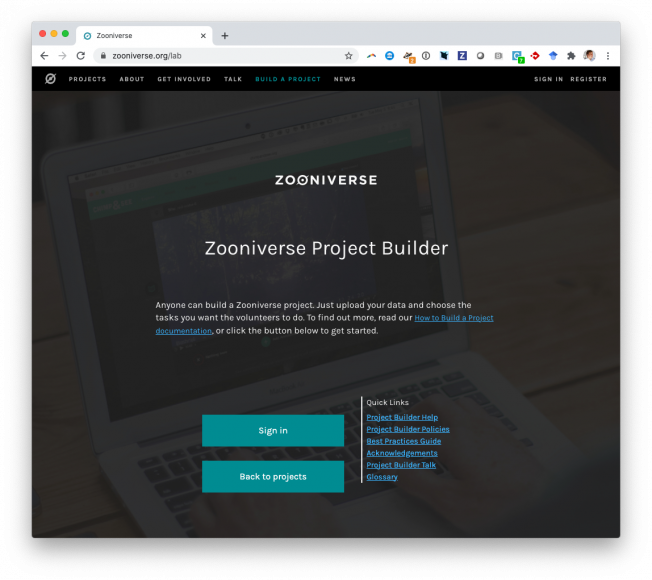Galaxy Zoo: An independent look at the evolution of the bar fraction over the last eight billion years from HST-COSMOS
ArXiv 1401.3334 (2014)
Abstract:
We measure the redshift evolution of the bar fraction in a sample of 2380 visually selected disc galaxies found in Cosmic Evolution Survey (COSMOS) Hubble Space Telescope (HST) images. The visual classifications used to identify both the disc sample and to indicate the presence of stellar bars were provided by citizen scientists via the Galaxy Zoo: Hubble (GZH) project. We find that the overall bar fraction decreases by a factor of two, from 22+/-5% at z=0.4 (tlb = 4.2 Gyr) to 11+/-2% at z=1.0 (tlb = 7.8 Gyr), consistent with previous analysis. We show that this decrease, of the strong bar fraction in a volume limited sample of massive disc galaxies [stellar mass limit of log(Mstar/Msun) > 10.0], cannot be due to redshift dependent biases hiding either bars or disc galaxies at higher redshifts. Splitting our sample into three bins of mass we find that the decrease in bar fraction is most prominent in the highest mass bin, while the lower mass discs in our sample show a more modest evolution. We also include a sample of 98 red disc galaxies. These galaxies have a high bar fraction (45+/-5%), and are missing from other COSMOS samples which used SED fitting or colours to identify high redshift discs. Our results are consistent with a picture in which the evolution of massive disc galaxies begins to be affected by slow (secular) internal process at z~1. We discuss possible connections of the decrease in bar fraction to the redshift, including the growth of stable disc galaxies, mass evolution of the gas content in disc galaxies, as well as the mass dependent effects of tidal interactions.The Ultraviolet Attenuation Law in Backlit Spiral Galaxies
ArXiv 1401.0773 (2014)
Abstract:
(Abridged) The effective extinction law (attenuation behavior) in galaxies in the emitted ultraviolet is well known only for actively star-forming objects and combines effects of the grain properties, fine structure in the dust distribution, and relative distributions of stars and dust. We use GALEX, XMM Optical Monitor, and HST data to explore the UV attenuation in the outer parts of spiral disks which are backlit by other UV-bright galaxies, starting with candidates provided by Galaxy Zoo participants. Our analysis incorporates galaxy symmetry, using non-overlapping regions of each galaxy to derive error estimates on the attenuation measurements. The entire sample has an attenuation law close to the Calzetti et al. (1994) form; the UV slope for the overall sample is substantially shallower than found by Wild et al. (2011), a reasonable match to the more distant galaxies in our sample but not to the weighted combination including NGC 2207. The nearby, bright spiral NGC 2207 alone gives accuracy almost equal to the rest of our sample, and its outer arms have a very low level of foreground starlight. This "grey" law can be produced from the distribution of dust alone, without a necessary contribution from differential escape of stars from dense clouds. The extrapolation needed to compare attenution between backlit galaxies at moderate redshifts, and local systems from SDSS data, is mild enough to allow use of galaxy overlaps to trace the cosmic history of dust. For NGC 2207, the covering factor of clouds with small optical attenuation becomes a dominant factor farther into the ultraviolet, which opens the possibility that widespread diffuse dust dominates over dust in star-forming regions deep into the ultraviolet. Comparison with published radiative-transfer models indicates that the role of dust clumping dominates over differences in grain populations, at this spatial resolution.Playing with science: Gamised aspects of gamification found on the online citizen science project - Zooniverse
15th International Conference on Intelligent Games and Simulation, GAME-ON 2014 (2014) 15-22
Abstract:
This paper examines incidents of play, socialisation, fun and amusement to consider how these forms of social interaction relate to the serious gaming elements of the citizen science platform. Through an ethnographic study we reveal how participants of citizen science projects demonstrate aspccts of 'Gamiscd' behaviour. 'Gamised' behaviour is defined as user generated play in a digital platform and contrasts to incidents of 'gamification∗ where a platform designer purposely embeds games into a computer platform. The paper therefore examines incidents of play, socialisation, fun and amusement and compares them with the serious gaming elements of the citizen science platform.Galaxy Zoo: Observing Secular Evolution Through Bars
STRUCTURE AND DYNAMICS OF DISK GALAXIES 480 (2014) 165-169
Erratum: Planet hunters. V. A confirmed jupiter-size planet in the habitable zone and 42 planet candidates from the kepler archive data (ApJ (2013) 776 (10))
Astrophysical Journal 778:1 (2013)



